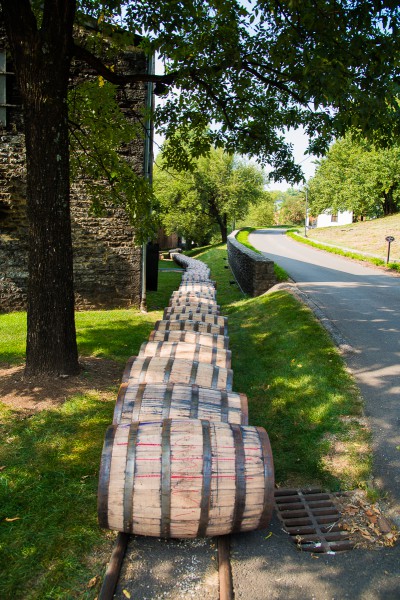Since The Bourbon Review is our launch sponsor (Thanks!), here is a short piece about the bourbon barrel.
By law, Bourbon has to be aged in new oak barrels. What kind of wood is used? Any white oak wood will work, but red oak will not.
In Kentucky, white oak, Quercus alba, is used almost exclusively because of the large volume of wood available. Other white oaks, including bur oak, Q. macrocarpa, chinkapin oak, Q. muehlenbergii, swamp white oak, Q. bicolor, swamp chestnut oak, Q. michauxii, chestnut oak, Q. montana, and post oak, Q. stellata, can also be used. Most sawmills no longer distinguish between white oak species, so each of these species may contribute a bit of wood to the barrel business.
What’s wrong with red oak? If you filled a red oak barrel with white dog, it would leak out in hours! All oaks have very large pores, called vessels, that carry water up the tree when it is alive. In red oak, those pores remain open. White oak pores are closed off by the tree with tyloses, effectively making the wood waterproof.
In the early days of Kentucky, barrels were used for storing all sorts of materials, including dry materials like corn meal and sugar. These dry materials were stored in red oak barrels, which would breathe and keep the contents from spoiling. Liquids such as whiskey were stored in white oak barrels.
In those days, if you wanted to order a barrel, you had to specify “tight cooperage” for liquids or “slack cooperage” for solids. The slack cooperage industry is long gone, but the tight cooperage industry thrives in Kentucky today.
